Top 5 Best Customer Service Solutions To Boost Retention

In a rush? Here’s the TL;DR:
Slow replies and generic responses don’t cut it anymore. Customers expect fast, personalised help across channels like chat, voice, email, or social media. If your support tools can’t keep up, you’re risking churn.
Quick takeaways:
- Traditional ticketing systems fall short of modern expectations
- Customers want seamless support across every channel
- AI agents handle FAQs, leads, and high chat volumes
- Omnichannel hubs prevent friction from switching channels
- Helpdesk automation reduces delays in busy teams
- In-product tools ease onboarding and reduce churn
- CRM-integrated platforms boost team context and accuracy
- Choosing the right tool depends on query volume, team size, and complexit
Still giving generic or slow responses? Answering customers after 48 hours is so old-school. If this continues, it will be an uphill struggle for you to retain customers. They expect quick answers, personalised conversations in real-time, and effortless experiences across every channel. That’s why customer service plays a key role in retention.
With the right customer service tools, your teams work faster with enough context. Whether it is enabling omnichannel support, deploying AI agents, or integrating necessary business tools with your CRM, the solutions you choose today determine your churn rate.
What are customer service solutions?
Tickets were the focus for traditional customer service platforms. It comes with email support, call centre solutions, and ticketing systems. Today’s customers prefer WhatsApp or Instagram to clear their queries. So these traditional platforms are no longer enough to meet the expectations of today’s customers.
Even if they start a conversation on your website and continue it later on, say, WhatsApp, they don’t want to repeat themselves. You’re expected to pick up from where customers left off. And this is hard for legacy systems to deliver.
Modern solutions in 2026 are smarter and more agile. They include:
- Omnichannel hubs connecting email, chat, social, and voice
- AI-powered chat interfaces that resolve routine issues instantly
- Automated workflows that reduce delays and human errors
Apart from speeding things up, these next-gen tools make every interaction relevant and helpful. The result? It helps you keep customers satisfied and loyal. To further enhance engagement, teams can use an AI video generator to create short, personalised videos that summarise key insights and guide customers more effectively.

Types of customer management solutions
A one-size-fits-all customer service solution doesn’t exist to meet the growing demands of customers today. Businesses now use an array of tools depending on their goals, support complexity, and team size. And below are some of the widely used types:
- Email support platforms: Formal or detailed queries still depend on emails. According to Forethought, 43% of companies have seen more support requests coming in via email. Most email support teams deal with around 5,000 to 10,000 customer queries every month. Email support is best suited for low-volume or asynchronous support.
- AI agents/Chatbots: Chat leads as the most critical channel for AI deployment at 46%. AI agents are smart systems that help you autonomously answer queries, resolve customer requests, collect lead details, and guide users through workflows. Worktual and Tidio are good examples.
- Helpdesk automation tools: Zendesk fits here with its ability to assign, escalate, and resolve tickets without human input.
- CRM-integrated support suites: These tools combine marketing, sales, and service data into a single view, enabling AI and human agents to quickly understand customers.
Finding the right mix of tools to meet your team’s specific needs and customer expectations is the key to better customer service.
Best customer service solutions
Here’s a quick comparison of five leading platforms based on their features, ideal use cases, and retention impact:
| Platform | Best For | Key Features | Retention Impact | Pricing Flexibility |
|---|---|---|---|---|
| Worktual | Growing teams that need AI | Conversational AI, voice agents, live chat | Fast resolution, less support friction | AI agents in all plans |
| Tidio | SMBs and e-commerce | AI chatbot, live chat, visitor tracking | Real-time help, faster conversions | Free plan + low-cost tiers |
| Intercom | SaaS and product-led teams | In-app messaging, proactive support | Reduced churn with contextual support | Pay-as-you-grow pricing |
| Zendesk | Structured support teams | Helpdesk, automation, multilingual KB | Process clarity and SLA enforcement | Modular enterprise pricing |
| Sendbird | Mobile-first businesses | Chat SDKs, APIs, embedded messaging | Native support inside apps | API-based usage pricing |
Let’s break down each of these tools further.
1. Worktual
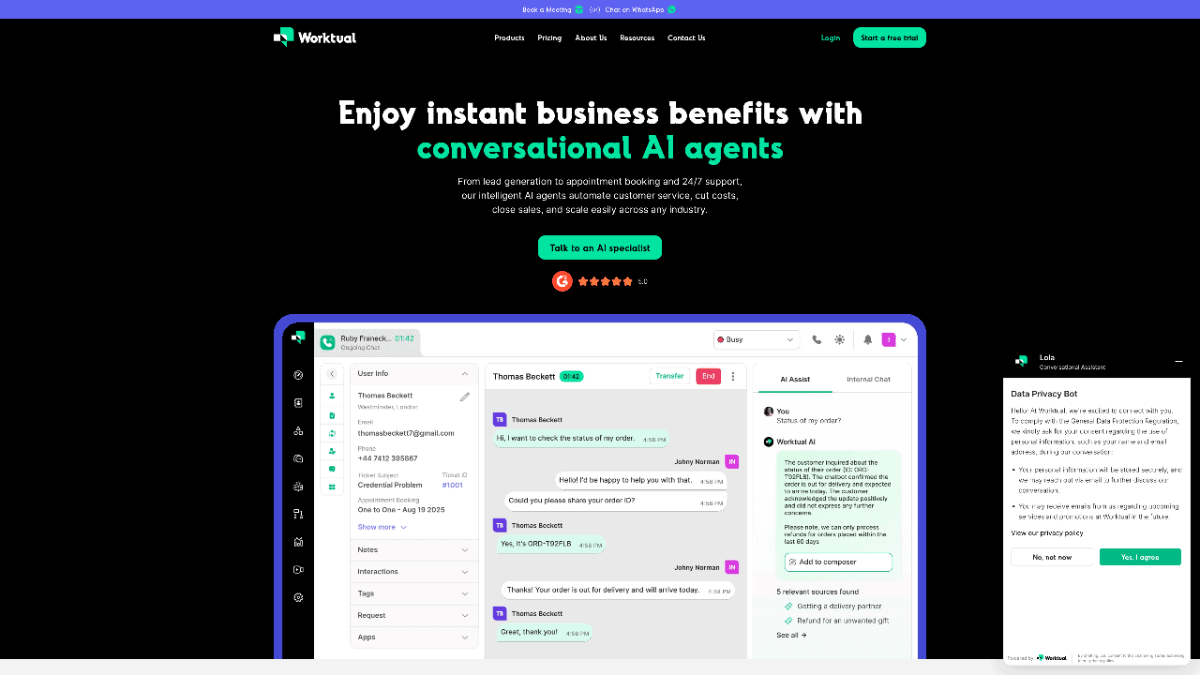
Worktual helps businesses scale customer service without adding headcounts or financial surprises. It offers AI agents, live chat, and voice support through voicebots. The best part is that all these are built into a unified dashboard. So your agents don’t have to switch tabs to understand what has happened, speeding up the resolution rate.
No matter how big or small your requirement is, every plan gives you access to a smart AI agent. This helps businesses automate answering common queries like FAQs and addressing routine requests right from the launch of the AI agents.
The higher-tier plans offer teams deeper control, powerful analytics, and voice-enabled agents. If you’re looking to deliver fast, accurate, personal support without stretching your teams thin, then look no further.
2. Tidio
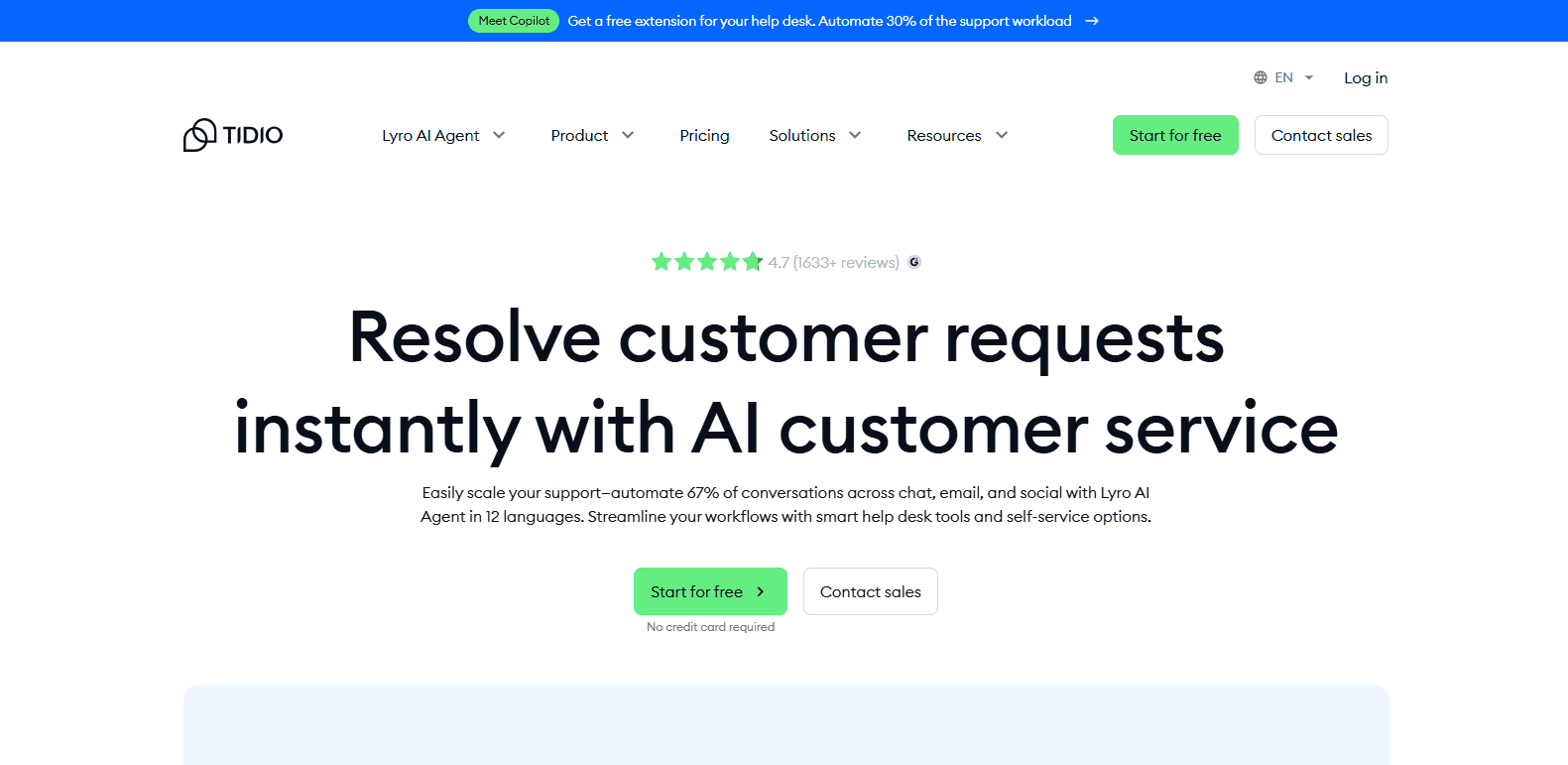
Agility is of the essence for small businesses and growing e-commerce teams. Tidio delivers just that, along with a live chat system and an AI chatbot. These help you answer routine questions, guide shoppers through the purchase cycle, and suggest products.
Proactive chat triggers help your business engage with customers more often. As a result, you increase the chances of converting visitors into buyers. For e-commerce stores, this proactiveness helps users remember items in their cart and nudge them towards completing the payment. It also integrates with platforms like Shopify and WordPress.
3. Intercom
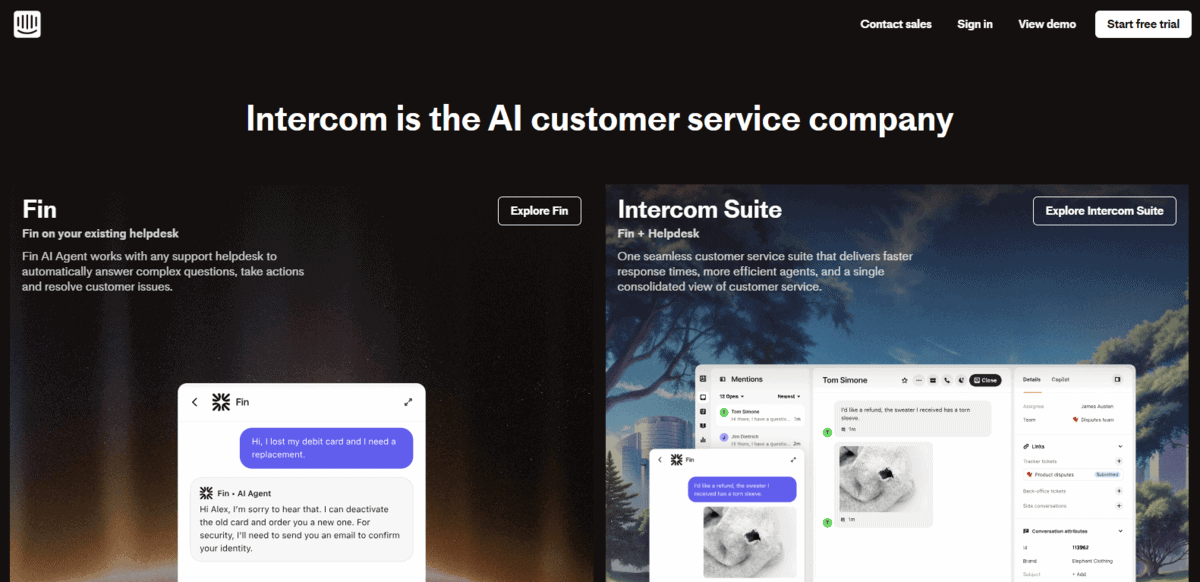
With Intercom, you not only provide support but retain users. This is especially true for SaaS businesses. Its chat widget appears inside your product or website, holding real-time conversations with customers whenever they have a quick question. Apart from this, it bundles automation flows, custom bots, and product tours to better navigate your product and get the most out of it.
Since support happens inside the product, it takes care right from onboarding, guiding, and supporting users in one place. Pricing is usage-based, making growing startups consider it as they want to scale without overpaying early on.
4. Zendesk
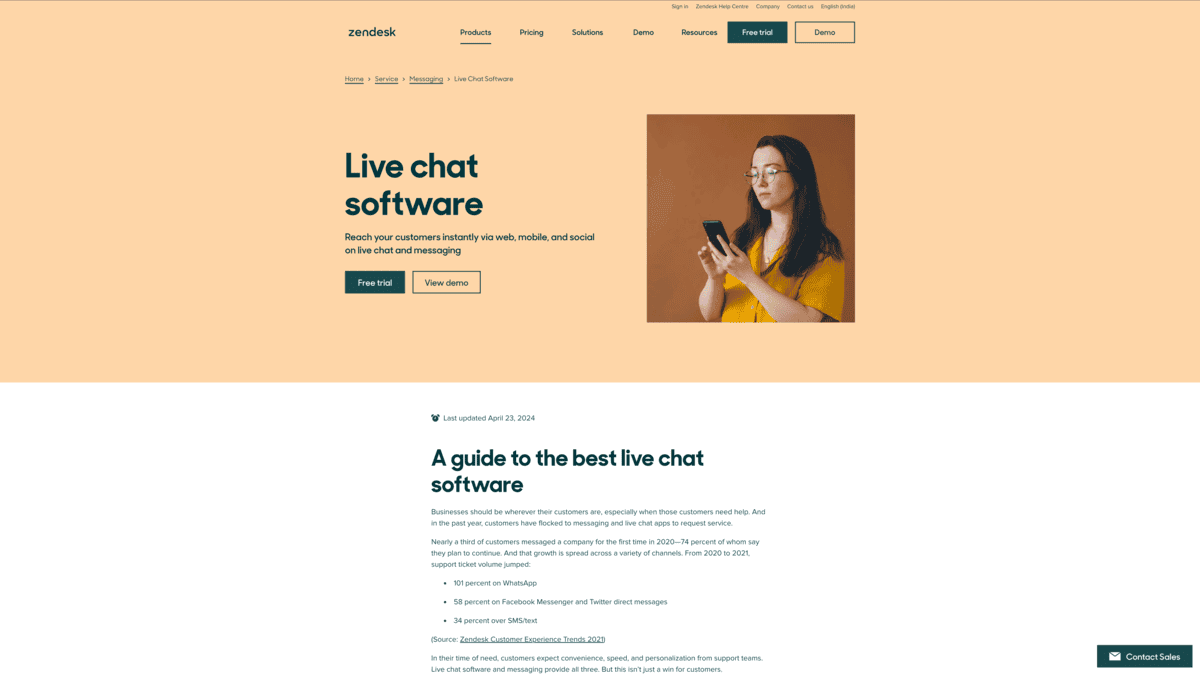
Large volumes of tickets need a powerful helpdesk, and Zendesk delivers just that. It is used by the support teams of large enterprises. Since it supports multiple languages, giving support across the world isn’t a hassle. You can integrate your CRM and other features to filter, assign, and escalate service requests across teams.
On top of it, if you have a defined structure or an SOP, Zendesk shines in such scenarios. Slipping through cracks increases when teams are always busy. So, it brings discipline to busy teams by enforcing SLAs, streamlining workflows, and generating detailed performance reports.
Also, it comes with a knowledge base, giving space for self-service, so support load reduces and satisfaction increases.
5. Sendbird
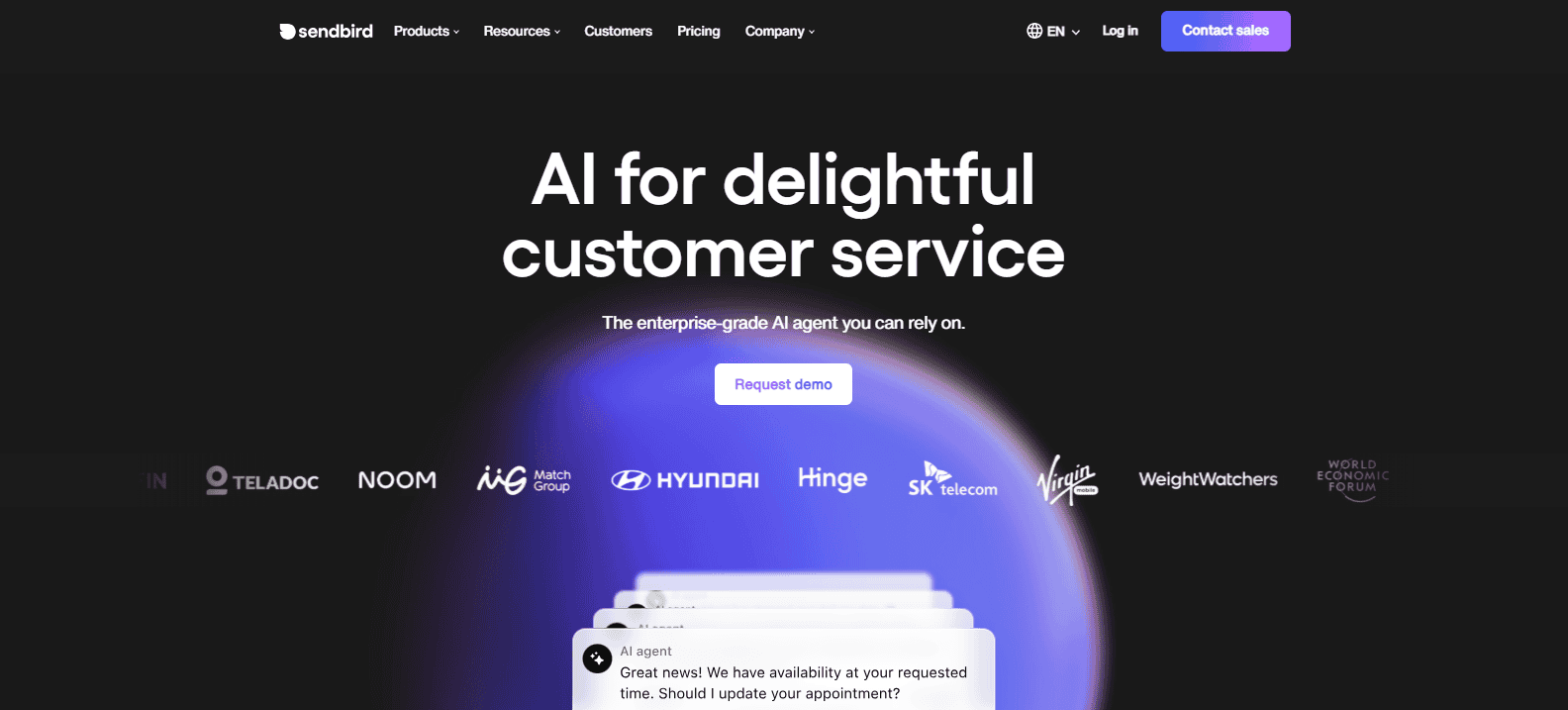
Sendbird stands out when it comes to in-app chat experiences. It allows businesses to integrate chat widgets into mobile or web apps for real-time messaging. If you operate in sectors like healthtech, edtech, or marketplaces, Sendbird comes in handy as you heavily rely on community interactions.
As a result, businesses like yours can reduce the distance between the problem and the solution. Now, your users get help without switching tabs or waiting for email replies, thereby lowering the churn rate.
How to choose the right customer service solution for 2026
Identifying the right tool depends on various factors: your team size, budget, and the industry you operate in. Here’s how to narrow it down:
- Start with volume: Ask yourself whether you’re answering a handful of chats or thousands in a week or month. See if your choice of tool matches the scale of your conversations.
- Look at team bandwidth: Automation works best when it helps your team do more with less—not replace them. Choose a platform that brings out the best from both worlds.
- Think about complexity: If the complexity of chats you receive currently is simple and straightforward, a basic chatbot may suffice. For complex queries, look for tools with conversational AI capabilities alongside effortless human hand-offs.
- Map customer behaviour: How do your customers interact with your brand for support reasons? Is it through the website, emails, chats, or social media channels? Go for a tool that meets them where they are.
- Review data integrations: Pick a platform that connects easily with your existing tech stack—whether that’s your CRM, order tracker, or other business tools.
Ultimately, the idea is to democratise help, not just for your customers, but for your team too.
Conclusion
Retention is a process. It doesn’t happen by accident. Ensuring consistent, thoughtful support at every step of the customer journey reduces the churn rate.
Whether you’re using AI to respond faster or integrating chat into your website/application, the tools you pick decide how your customers feel and whether they stick around for longer.
With solutions like Worktual, Tidio, Intercom, Zendesk, and Sendbird, there’s a tool for every team and chat volume. The challenge isn’t finding a platform. It’s identifying the right one that helps you keep your customers close, even when things go wrong.
Worktual makes that easy. With smart AI agents, real-time chat, and seamless voice support built into a single dashboard, Worktual gives your team the power to support customers the way they deserve every time. Book your demo slot today.
What is Worktual?
Free your team from repetitive questions
Worktual helps you slash support costs by 60% while improving response speed and accuracy.
See it in actionRelated Posts

Agentic AI in Voice Bots: Reactive vs Proactive Agents Explained
Discover how Agentic AI transforms voice bots from reactive responders to proactive agents, delivering smarter, faster, and more human-like support.

What Is Agentic AI and why it’s transforming every industry
Once a novelty, AI chatbots and AI agents have quietly become the PAs and shop assistants of the digital high street. If you’re exploring Tidio alternatives, you’re likely looking for tools that not only chat but also think, reason, and grow with your business. Now, they’re everywhere: handling support, grabbing leads, and speaking your customers’ language (even if it’s Japanese and it’s 3 am).

Top Conversational AI Market Trends 2026
The way we interact with businesses is changing. In 2025, conversational AI is a critical part of delivering smart customer experiences.

